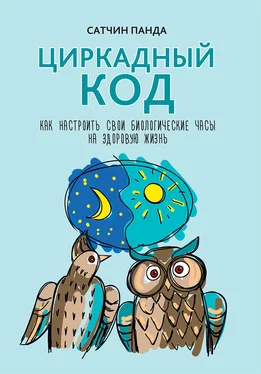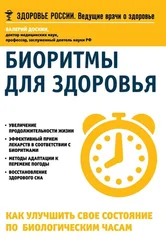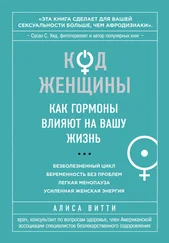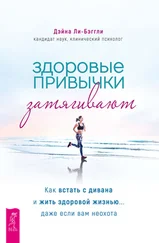10. T. Moro et al., «Effects of Eight Weeks of Time-Restricted Feeding (16/8) on Basal Metabolism, Maximal Strength, Body Composition, Inflammation, and Cardiovascular Risk Factors in Resistance-Trained Males», Journal of Translational Medicine 14 (2016): 290.
11. J. Rothschild et al., «Time-Restricted Feeding and Risk of Metabolic Disease: A Review of Human and Animal Studies», Nutrition Reviews 72, no. 5 (2014): 308—18.
12. T. Ruiz-Lozano et al., «Timing of Food Intake Is Associated with Weight Loss Evolution in Severe Obese Patients after Bariatric Surgery», Clinical Nutrition 35, no. 6 (2016): 1308—14.
13. A. W. McHill et al., «Later Circadian Timing of Food Intake Is Associated with Increased Body Fat», American Journal of Clinical Nutrition 106, no. 6 (2017): 1213—19.
14. National Institute of Diabetes and Digestive and Kidney Diseases, «Digestive Diseases Statistics for the United States», https:// www.niddk.nih.gov/health-information/health-statistics/digestive-diseases.
15. McHill, «Later Circadian Timing.»
16. J. Suez et al., «Artificial Sweeteners Induce Glucose Intolerance by Altering the Gut Microbiota», Nature 514, no. 7521 (2014): 181—86.
ГЛАВА 6. Оптимизация обучения и работы
1. J. S. Durmer and D. F. Dinges, «Neurocognitive Consequences of Sleep Deprivation», Seminars in Neurology 25, no. 1 (2005): 117—29. 2. S. M. Greer, A. N. Goldstein, and M. P. Walker, «The Impact of Sleep Deprivation on Food Desire in the Human Brain», Nature Communications 4 (2013): article no. 2259. 3. R. Stickgold, «Sleep-Dependent Memory Consolidation», Nature 437, no. 7063 (2005): 1272—78. 4. T. A. LeGates et al., «Aberrant Light Directly Impairs Mood and Learning through Melanopsin-Expressing Neurons», Nature 491, no. 7425 (2012): 594—98. 5. M. Boubekri, et al., «Impact of Windows and Daylight Exposure on Overall Health and Sleep Quality of Ofifce Workers: A Case-Control Pilot Study», Journal of Clinical Sleep Medicine 10, no. 6 (2014): 603—11. 6. P. Meerlo, A. Sgoifo, and D. Suchecki, «Restricted and Disrupted Sleep: Effects on Autonomic Function, Neuroendocrine Stress Systems and Stress Responsivity», Sleep Medicine Reviews 12, no. 3 (2008): 197–210. 7. J. A. Foster and K. A. McVey Neufeld, «Gut-Brain Axis: How the Microbiome Influences Anxiety and Depression», Trends in Neurosciences 36, no. 5 (2013): 305—12. 8. S. J. Kentish and A. J. Page, «Plasticity of Gastro-Intestinal Vagal Afferent Endings», Physiology & Behavior 136 (2014): 170—78. 9. L. A. Reyner et al., «‘Post-Lunch’ Sleepiness During Prolonged, Monotonous Driving – Effects of Meal Size», Physiology & Behavior 105, no. 4 (2012): 1088—91.
10. M. S. Ganio, et al., «Mild Dehydration Impairs Cognitive Performance and Mood of Men», British Journal of Nutrition 106, no. 10 (2011): 1535— 43.
11. T. Partonen and J. Lönnqvist, «Bright Light Improves Vitality and Alleviates Distress in Healthy People», Journal of Affective Disorders 57, no. 1–3 (2000): 55–61.
12. D. H. Avery et al., «Bright Light Therapy of Subsyndromal Seasonal Affective Disorder in the Workplace: Morning vs. Afternoon Exposure», Acta Psychiatrica Scandinavica 103, no. 4 (2001): 267—74.
13. C. Cajochen et al., «Evening Exposure to a Light-Emitting Diodes (LED)-Backlit Computer Screen Affects Circadian Physiology and Cognitive Performance», Journal of Applied Physioliology 110, no. 5 (2011): 1432—38.
14. A. M. Chang et al., «Evening Use of Light-Emitting eReaders Negatively Affects Sleep, Circadian Timing, and Next-Morning Alertness», Proceedings of the National Academy of Sciences of the United States of America 112, no. 4 (2015): 1232—37.
15. M. P. Mattson and R. Wan, «Beneficial Effects of Intermittent Fasting and Caloric Restriction on the Cardiovascular and Cerebrovascular Systems», Journal of Nutritional Biochemistry 16, no. 3 (2005): 129—37.
16. R. K. Dishman et al., «Neurobiology of Exercise», Obesity 14, no. 3 (2006): 345—56.
17. E. Guallar, «Coffee Gets a Clean Bill of Health», BMJ 359 (2017):j5356.
18. R. Poole et al., «Coffee Consumption and Health: Umbrella Review of Meta-Analyses of Multiple Health Outcomes», BMJ 359 (2017):j5024.
19. I. Clark and H. P. Landolt, «Coffee, Caffeine, and Sleep: A Systematic Review of Epidemiological Studies and Randomized Controlled Trials», Sleep Medicine Reviews 31 (2017): 70–78.
20. J. Shearer and T. E. Graham, «Performance Effects and Metabolic Consequences of Caffeine and Caffeinated Energy Drink Consumption on Glucose Disposal», Nutrition Reviews 72, Suppl. 1 (2014): 121—36.
21. T. M. Burke et al., «Effects of Caffeine on the Human Circadian Clock In Vivo and In Vitro», Science Translational Medicine 7, no. 35 (2015): 305ra146.
22. S. Grossman, «These Are the Most Popular Starbucks Drinks Across the U.S.», Time, July 1, 2014.
23. H. P. van Dongen and D. F. Dinges, «Sleep, Circadian Rhythms, and Psychomotor Vigilance», Clinics in Sports Medicine 24, no. 2 (2005): 237— 49.
24. B. L. Smarr, «Digital Sleep Logs Reveal Potential Impacts of Modern Temporal Structure on Class Performance in Different Chronotypes», Journal of Biological Rhythms 30, no. 1 (2015): 61–67.
25. K. Wahlstrom, «Changing Times: Findings from the First Longitudinal Study of Later High School Start Times», National Association of Secondary School Principals Bulletin 86, no. 633 (2002): 3—21.
26. J. Boergers, C. J. Gable, and J. A. Owens, «Later School Start Time Is Associated with Improved Sleep and Daytime Functioning in Adolescents», Journal of Developmental and Behavioral Pediatrics 35, no. 1 (2014): 11–17.
27. J. A. Owens, K. Belon, and P. Moss, «Impact of Delaying School Start Time on Adolescent Sleep, Mood, and Behavior», Archives of Pediatric & Adolescent Medicine 164, no. 7 (2010): 608—14.
ГЛАВА 7. Как синхронизировать физические упражнения со своим циркадным кодом
1. M. S. Tremblay et al., «Physiological and Health Implications of a Sedentary Lifestyle», Applied Physiology, Nutrition, and Metabolism 35, no. 6 (2010): 725— 40.
2. T. Althoff et al., «Large-Scale Physical Activity Data Reveal Worldwide Activity Inequality», Nature 547, no. 7663 (2017): 336—39.
3. D. R. Bassett, P. L. Schneider, and G. E. Huntington, «Physical Activity in an Old Order Amish Community», Medicine and Science in Sports and Exercise 36, no. 1 (2004): 79–85.
4. H. O. de la Iglesia et al., «Access to Electric Light Is Associated with Shorter Sleep Duration in a Traditionally Hunter-Gatherer Community», Journal of Biological Rhythms 30, no. 4 (2015): 342—50.
5. T. Kubota et al., «Interleukin-15 and Interleukin-2 Enhance Non-REM Sleep in Rabbits», American Journal of Physiology: Regulatory Integrative and Comparative Physiology 281, no. 3 (2001): R1004—12. 6. Y. Li et al., «Association of Serum Irisin Concentrations with the Presence and Severity of Obstructive Sleep Apnea Syndrome», Journal of Clinical Laboratory Analysis 31, no. 5 (2016): e22077. 7. K. M. Awad et al., «Exercise Is Associated with a Reduced Incidence of Sleep-Disordered Breathing», American Journal of Medicine 125, no. 5 (2012): 485—90. 8. J. C. Ehlen et al., «Bmal1 Function in Skeletal Muscle Regulates Sleep», eLife 6 (2017): e26557. 9. E. Steidle-Kloc et al., «Does Exercise Training Impact Clock Genes in Patients with Coronary Artery Disease and Type 2 Diabetes Mellitus?» European Journal of Preventive Cardiology 23, no. 13 (2016): 1375—82.
10. N. Yang, and Q. J. Meng, «Circadian Clocks in Articular Cartilage and Bone: A Compass in the Sea of Matrices», Journal of Biological Rhythms 31, no. 5 (2016): 415—27.
Читать дальше
Конец ознакомительного отрывка
Купить книгу










